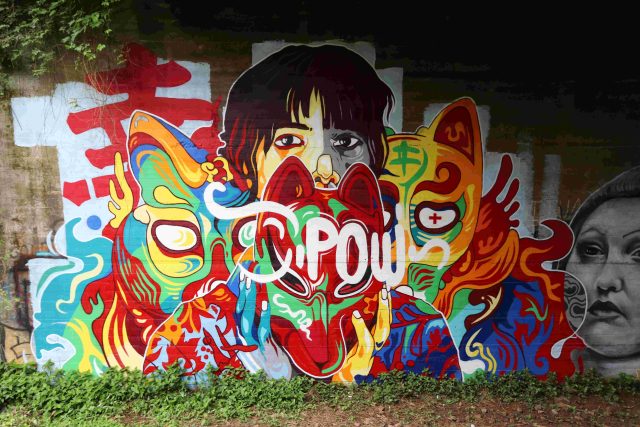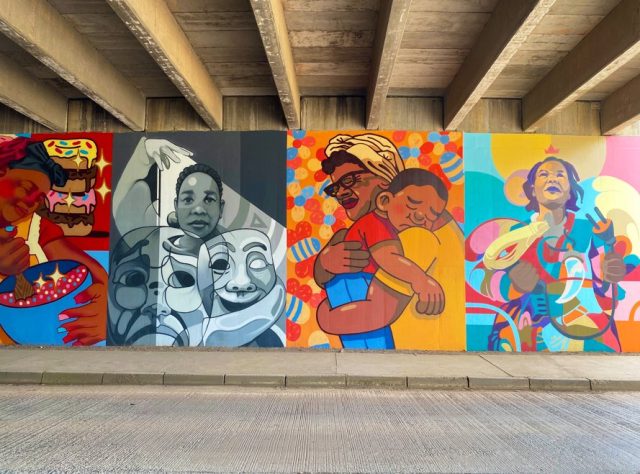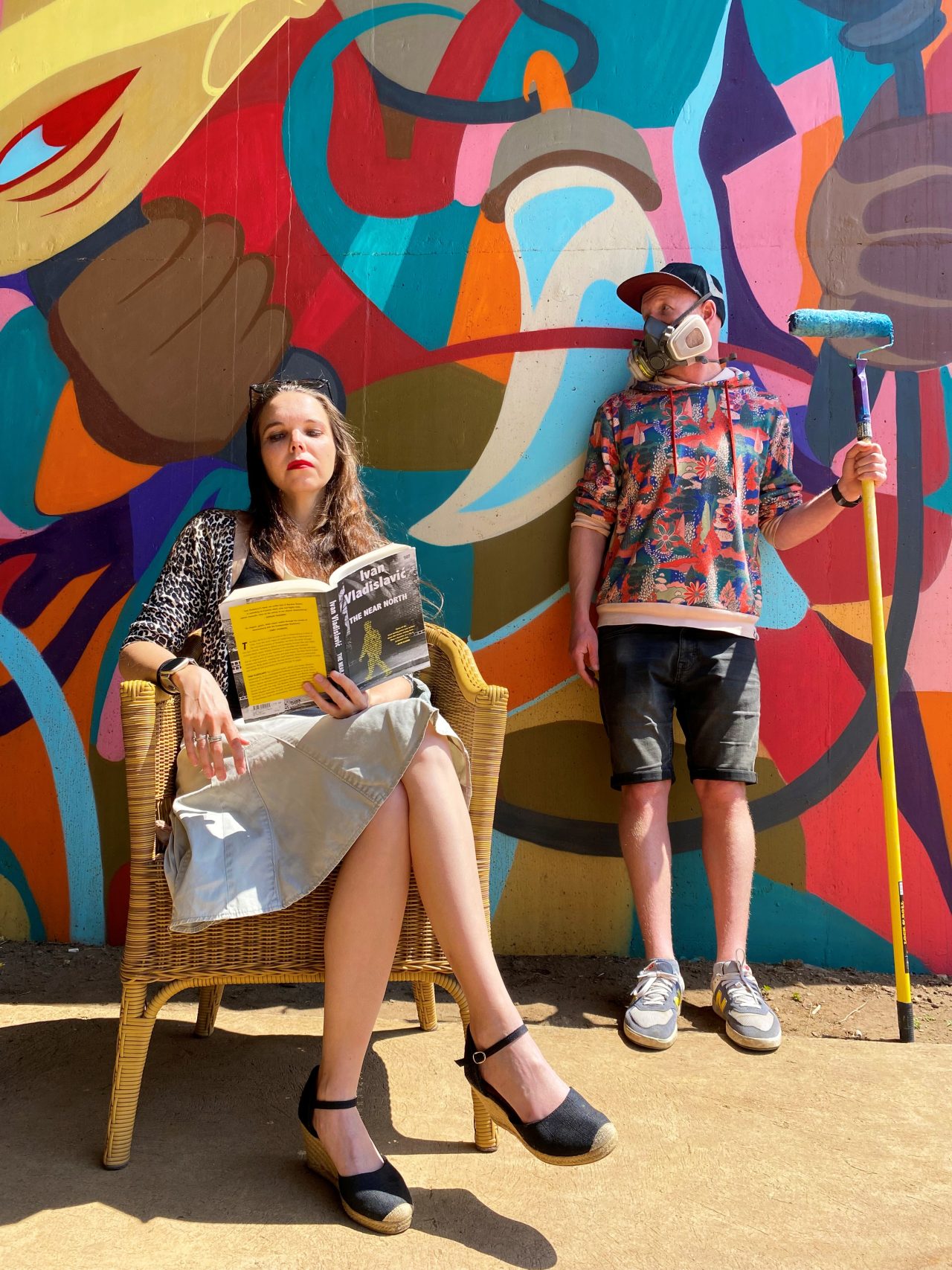Jackal & Hide founders, Jaqui Hiltermann and Jono Hornby, first met through family connections but only officially crossed paths three years ago, under what is now the BOOMTOWN Gallery. Though they had attempted to collaborate before, life had other plans. Following the civil unrest, Jaqui was struck by Jono’s proactive approach to getting things done, which resonated with her. Their shared passion for human geography and placemaking quickly bonded them. Initially, they aimed to keep their work separate, but collaboration felt natural, blending their lives and creative talents. Now, their work never stops—and neither does the fun.
 Jaqui, what inspired you to move from academia to starting Jackal & Hide?
Jaqui, what inspired you to move from academia to starting Jackal & Hide?
I fell in love with human geography through prison studies and Ivan Vladislavic’s writing. I always dreamed of doing a PhD, and I completed mine in Media Studies, focusing on human geography and cultural studies. My nostalgia for place and memory is why I moved back to Hilton from Cape Town, and these themes influence my writing and research. While I enjoyed lecturing, I’ve always wanted to be a writer. Through Jackal & Hide, Jono and I combine our skills and passions, allowing me to have fun with writing. I truly have the best job in the world.
Jono, what was your first big “aha” moment when you realised that art could be more than just a personal passion?
I believe art and mark-making are innate in all of us—either encouraged or neglected over time. I was drawn to it from a young age, and my parents supported this passion. Many see “professional artist” as an oxymoron, but art can be a career. My interest in art led to graffiti, which I view as a form of rebellion and a way to democratise the visual landscape. I’ve worked in various creative fields, but activism has always guided my work. Street art, my preferred medium, is raw, real, and ephemeral, belonging to everyone as long as we choose it to be.
Why was it important for you to combine art with these unconventional, nostalgic spaces?
Nostalgia heightens the senses and gives every place a story. Our role is to bring those stories to life through art and memory. The BOOMTOWN Gallery is special to us—it’s where Jaqui spent her rebellious teenage years and where Jono began painting. We love railway lines and tunnels and embrace the unconventional. The gallery celebrates women and their stories, showing that art belongs to everyone, not just in traditional galleries. Street art, curated and displayed by artists for the public, has no price tag, and we aim to reveal the hidden magic in everyday places.
 How do you ensure that your projects and galleries resonate with people who may not traditionally engage with art galleries?
How do you ensure that your projects and galleries resonate with people who may not traditionally engage with art galleries?
We believe art is for everyone, which is why street art is so important. It’s not confined to private collections or galleries, and there’s no price tag. Street art reclaims public space from invasive advertising, telling stories about communities and individuals that resonate with locals. Our art says, “We see you”, showing that your story matters. Inspired by J. Edward Chamberlin’s quote, “If this is your land, where are your stories?”, we create connections through place. With Jackal & Hide, we add narrated stories via QR code, and our latest project, The BOOMTOWN Story Tour, brings these stories to life as radio plays and podcasts.
What role has your community played in supporting your work, and how do you see Jackal & Hide giving back to those who’ve helped along the way?
Most of what we do is self-funded because we’re passionate about making the Midlands a global street art destination. One challenge is getting permission to paint, but we’re fortunate to have a supportive municipality. Matt Hoggarty from Love Howick has been key in securing funds through the Lottoland’s Help ’n Dorp Project, which helped start the BOOMTOWN Story Tour. Local support from Blake Kershaw (BuildIt) and the Downes family (Spar) has also been invaluable. While some don’t yet grasp the QR code stories linked to our murals, we believe the BOOMTOWN Story Tour will change that. We’re proud to have Lelo Mncwango, mentored by Jono, as a support artist, and thrilled to see her grow as a solo artist.
 What message would you give to someone who doesn’t consider themselves an “art person” but might want to explore your work?
What message would you give to someone who doesn’t consider themselves an “art person” but might want to explore your work?
Our motto is “Make it Nice.” We believe in creating diverse art that appeals to everyone. For those who don’t initially “get” it, we encourage looking deeper because our work has layers, and the story element is key. Studies show that street art significantly impacts tourism, and while some mistake it for graffiti, we’ve demonstrated that it adds value to communities by bringing stories to life. It’s also our responsibility to maintain high standards and ensure artists are properly paid for their work.
